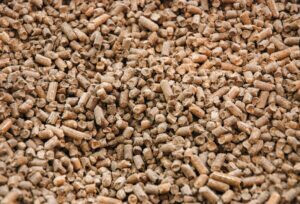Wood pellet demand in Asia is likely to diverge in 2023, with Japanese consumption set to rise as new capacity is brought on line, while South Korean demand could remain stable.
Asian wood pellet supply tightened in 2022, but is likely to ease in 2023. But increased scrutiny of Vietnamese suppliers could cause a shift in trade flows, with wood pellet availability increasing for South Korean buyers and remaining tight for Japan.
A shortage of raw materials and an increase in demand from Europe tightened wood pellet supply in Asia in 2022, pushing fob Vietnam wood pellet prices to historical highs. Supply is likely to increase in 2023 because of a recent decline in European demand as a result of high stocks, along with lower Chinese wood chip demand given ample inventories.
The Japanese and South Korean markets are likely to see different levels of wood pellet availability in early 2023. Japanese demand is set to rise on the year as new generation capacity is brought on line. South Korean demand is likely to be stable, with no new 100pc biomass generation capacity scheduled to start up. But there could be a shift in supply flows between the two countries, with certification issues in major supplier Vietnam likely to result in more wood pellets being redirected to South Korea, which has different certification requirements compared with Japan.
Vietnamese wood pellets that meet the requirements of Japanese utilities under the country’s feed-in-tariff (FiT) scheme hit historical highs in 2022, with the Argus-assessed price reaching $204.75/t on 16 November. The market was supported by tight raw material supply caused by strong demand for wood chips from Chinese pulp and paper producers, along with tighter North American supplies as European demand firmed after sanctions and certification suspensions were imposed on Russian timber owing to the Russia-Ukraine conflict.
Japanese capacity additions
Tight wood pellet supplies and firm demand are likely to persist in the Japanese market through 2023 even as more biomass capacity is brought on line under the country’s FiT scheme.
Major plants slated to come online in 2023 include Kansai Electric’s 200MW Aioi Power Station Unit 2 which will use wood pellets, and Renova’s four new 75MW biomass plants in Sendai, Tokushima, Ishinomaki, and Omaezaki, which will use wood pellets and palm kernel shells (PKS).
Japan’s installed biomass capacity was at 5.9GW at the end of June 2022, with an additional 936MW expected to come online in 2023, according to market participants. Japan could import between 5.5mn-6.5mn t of wood pellets in 2023, according to forecasts by market participants, up from projections of 4.6mn-5mn t in 2022.
Expectations of an increase in Japanese demand come at a time when supply of wood pellets with the certification required under the country’s FiT scheme is likely to be curbed. Major Vietnamese supplier An Viet Phat’s (AVP) expulsion from the Forest Stewardship Council (FSC) system, following allegations that it sold wood pellets with false certificates, is expected to take out an estimated 400,000-500,000 t/yr from the Japanese market, participants said. Market participants expect more FSC endorsements could be suspended in Vietnam because of increased FSC scrutiny of the domestic industry.
But this could result in more wood pellets that would have been sold to the Japanese market being available to South Korea. The extra supply created by AVP’s loss of accreditation has resulted in a softening in prices of wood pellets of the specification typically sold to the South Korean market, after the 90-day spot price for this type of wood pellets reached a high of $180.14/t in mid-November.
The price of Vietnamese wood pellets mainly sold to South Korea hit historical highs in 2022 as feedstock was in tight supply after the country’s furniture market experienced a softening in export demand. This reduced sawdust and wood chips availability for wood pellet production.
But South Korea’s ministry of trade, industry and energy (Motie) announced a price cap for the country’s system marginal price (SMP) for December 2022 at 158.96 Won/kWh ($122/MWh) for inland South Korean power, a significant drop from November’s average SMP at W242.17/kWh. The emergency cap for the SMP for December was triggered as the previous three-month average of wholesale power prices was within the top tenth percentile of the decade’s average of monthly wholesale prices. The emergency cap is also likely to be triggered in January and February 2023. This has also set a ceiling on wood pellet purchase prices from independent power plants (IPPs), as IPPs can only charge state-controlled monopoly retail power seller Kepco at the SMP cap, some market participants believe.
High South Korean inventories
Additionally, wood pellet inventory levels at the South Korean ports of Gwangyang and Gunsan are high following a 15-day truck drivers’ strike.
The strike ended on 9 December but market participants expect that it will take 1-2 months to consume built up inventories, weighing on the country’s demand for wood pellets during the end of 2022 and early 2023.
Many South Korean market participants expect the country’s wood pellet imports to be little changed or slightly higher on the year in 2023, as no new 100pc biomass generation capacity is likely to be brought on line in 2023. South Korea is expected to import around 4mn t of wood pellets this year.
But there could be some new demand. South Korean IPP Gangneung Eco Power (GEP) started commercial operations at its 1.04GW unit 1 in late October 2022. Its 1.04GW unit 2 is currently carrying out test operations and is likely to start commercial operations in March 2023. GEP currently only consumes coal, but the power plant is likely to start co-firing coal and wood pellets in 2023.
By Sam Hong and Deborah Sun
